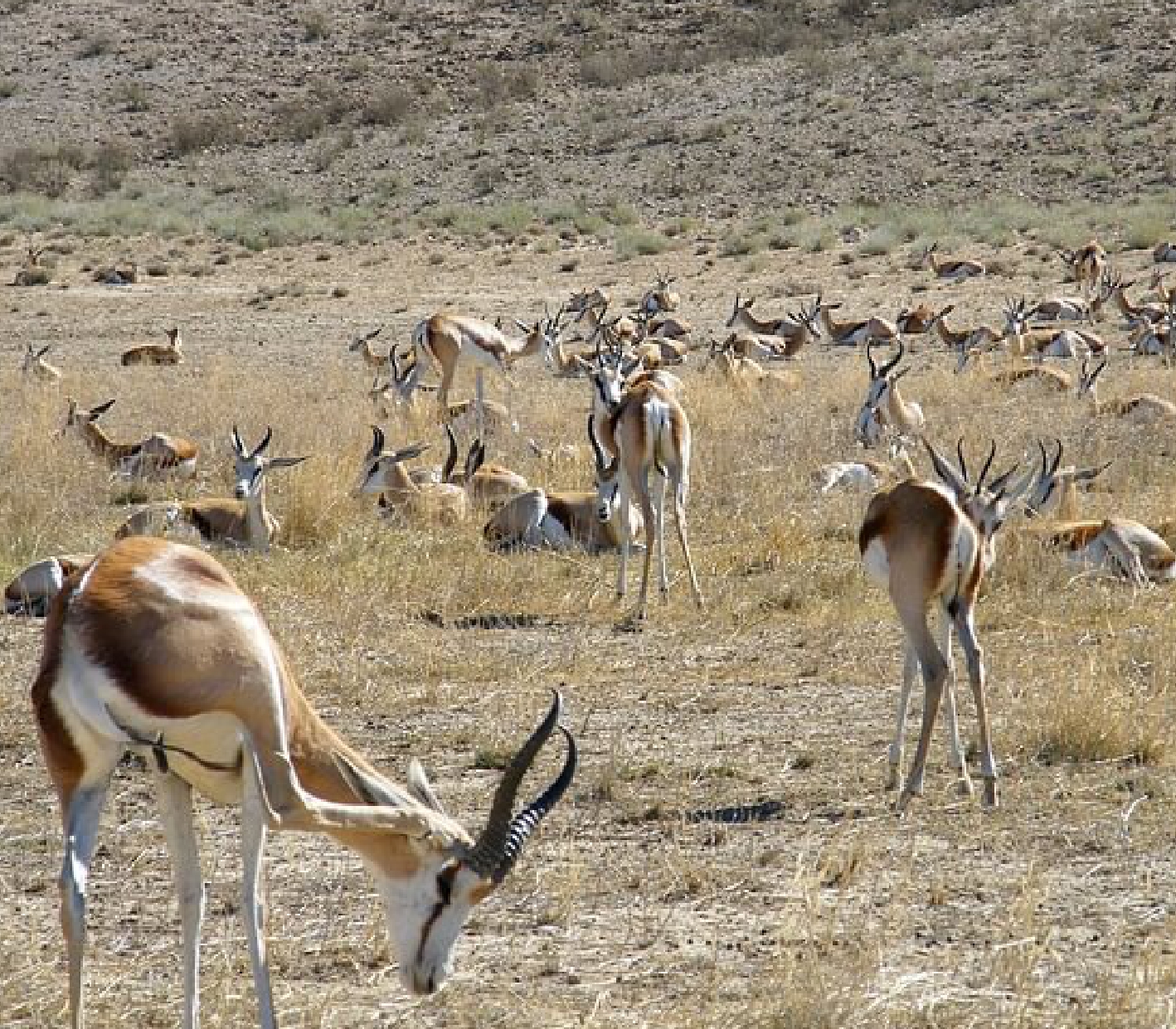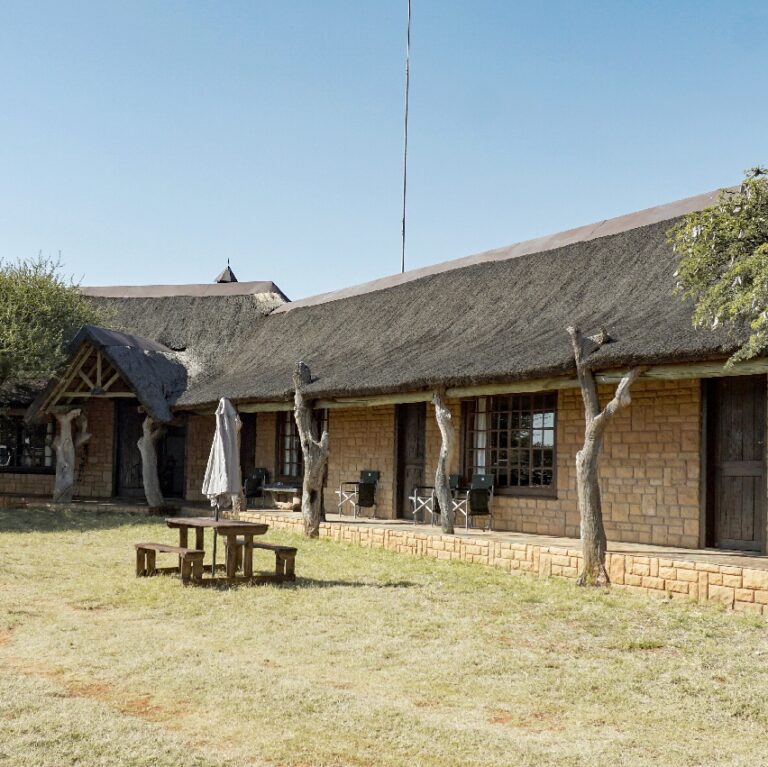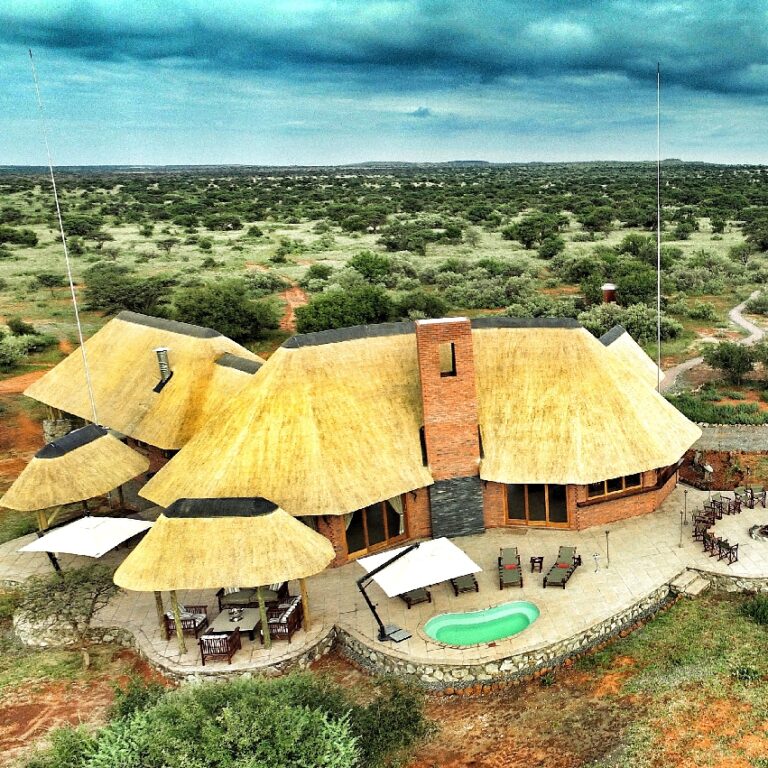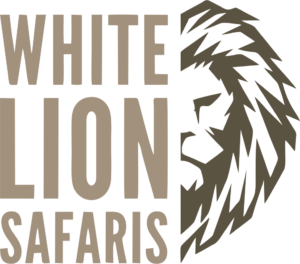Trophy Hunting
Hunting in Africa is purely food for your soul, and you will be wanting more when you leave.
Leaving the camp at first light you will enjoy the cool crisp mornings, tracking across the plains in search of your perfect trophy.
Hunting in Africa is purely food for your soul, and you will be wanting more when you leave.
Leaving the camp at first light you will enjoy the cool crisp mornings, tracking across the plains in search of your perfect trophy.
The clean fresh air will refresh your body and mind, and the mind-boggling vastness of hunting areas and great numbers of species will leave you in awe.
It is hard to describe the rush and heart pumping experience when you look through your rifle scope, seconds away from pulling the trigger on your first African animal, it will feel like your very first hunt.
If hunting runs deep through your veins and has a great desire to full fill your wildest dreams of harvesting and collecting trophies from around the world.
White lion Safaris is a perfect place to start. Not only does White Lion Safaris has great deals and packages at affordable prices, but we are also known for our incredible flexibility and tailor-made hunts.
We strive to provide world-class hunting both for plains and dangerous game.
Hunting with our experienced professional hunters, you will have the perfect amount of guidance to take you right up, close and personal with your next trophy.
We as White Lion Safaris are fortunate to have our main hunting camp right in the middle of the country, where 4 of the major biomes come together.
This creates a perfectly combined habitat for the 32 predominant species of each of these areas to thrive in!
We realize that some species are more predominant in certain areas with different landscapes, vegetation and climate.
Therefore we have numerous hunting areas stretching from the Kalahari in the west to lushes and thick bushveld in the north catering to the true species-specific hunter.
All this excitement is worth capturing on HD video for your memories. We use and work closely with professional videographers for the ultimate African hunting experience.

With a great diversity of habitat in our hunting areas, you will have a blast stalking Blue Wildebeest in the thickets, shooting a grazing Kudu bull across a valley or stretching your rifles legs at a Kudu in the great big open plains.

We are trained and fully registered big game hunters to stay with you every step of the way. If you have what it takes and nerves of steel to take on one of Africa’s dangerous beasts we will be right by your side.

Hunting can be done year round, but we recommend hunting during our cooler months for the sake of comfort and to lessen the risk of damage to trophies due to excessive heat.
After being introduced to hunting by my father at age 5, I had a passion for wildlife, hunting and the outdoors.
This sculpted the foundation of a dream and desire to become a conservationist and professional hunter in Africa.
In the year 2004, this dream became a reality when I founded White Lion Safaris as a hunting and photographic safari operation right here in beautiful South Africa.
Professional Hunter
He was born and raised in a hunting family who still hunts actively for meat every year.
He loves the outdoors, wildlife, long range shooting and the company of good friends around campfires.
Started working for White Lion Safaris in 2014 and still going strong, he loves what he does and really enjoys guiding clients and showing them our beautiful diverse country, South Africa.
Professional Hunter
Ben is our most experienced professional hunter at White Lion Safaris.
He has extensive experience in hunting dangerous and plains game in various African countries.
He is a humble man with a wonderful personality. His experience and skill speak for themselves and all our clients that had the privilege to hunt with Ben can attest to that.
Plains game hunting brings more hunters to Africa each year than all of the Big Five combined.
African plains game hunting is conducted in a variety of geographical areas which can vary widely in climate, vegetation, and topography. The hunting areas can range from densely wooded savanna to wide open grasslands.
The lowland nyala or simply nyala, is a spiral-horned antelope native to southern Africa. It is a species of the family Bovidae and genus Tragelaphus, previously placed in genus Nyala.

A large-sized savannah and plains antelope found in East and Southern Africa. It is a species of the family Bovidae and genus Taurotragus.

Large Antelope found widely in sub-Saharan Africa. Its 13 subspecies are grouped under two varieties: the Common or Ellipsiprymnus Waterbuck and the Defassa Waterbuck.

Medium-sized antelope found mainly in south and southwest Africa. The sole member of the genus Antidorcas. Three subspecies are identified.

Large antelope and one of the two species of wildebeest. It is placed in the genus Connochaetes and family Bovidae, and has a close taxonomic relationship with the black wildebeest.

The mountain reedbuck is an antelope found in mountainous areas of much of sub-Saharan Africa. can present a very challenging hunt with a lot of climbing involved.

The blue duiker is a small antelope found in central, southern and eastern Africa. It is the smallest species of duiker.

The Cape or southern grysbok is a small antelope that is endemic to the Western Cape region of South Africa between Albany and the Cederberg mountains.

The grey rhebok or gray rhebuck, locally known as the reebok in Afrikaans, is a species of antelope native to South Africa, Lesotho, and Eswatini. The specific name capreolus is Latin for ‘little goat’.

The black wildebeest or white-tailed gnu is one of the two closely related wildebeest species. It is a member of the genus Connochaetes and family Bovidae.

The steenbok is a common small antelope of southern and eastern Africa. It is sometimes known as the steinbuck or steinbok.

The bushpig is a member of the pig family that inhabits forests, woodland, riverine vegetation and cultivated areas in East and Southern Africa.

The gemsbok or South African oryx is a large antelope in the genus Oryx. It is native to the extremely dry, arid regions of Southern Africa; notably, the Kalahari and Namib Desert.

The sable antelope is a large antelope which inhabits wooded savanna in East and Southern Africa, from the south of Kenya to South Africa, with a separated population in Angola.

The southern reedbuck, rietbok or common reedbuck is a diurnal antelope typically found in southern Africa. It is placed in the genus Redunca and family Bovidae.

The oribi is a small antelope found in eastern, southern and western Africa. While this is the only member in the genus Ourebia, eight subspecies are identified.

The common duiker, also known as the gray duiker or bush duiker, is a small antelope and the only member of the genus Sylvicapra. This species is found everywhere in Africa south of the Sahara, excluding the Horn of Africa and the rainforests of the central and western parts of the continent.

The common tsessebe or sassaby is the southern, nominate subspecies of Damaliscus lunatus, although some authorities have recognised it as an independent species.

The bontebok is an antelope found in South Africa, Lesotho and Namibia. D. pygargus has two subspecies; the nominate subspecies, occurring naturally in the Fynbos and Renosterveld areas of the Western Cape, and the blesbok occurring in the Highveld.

Large savanna-dwelling antelope found in western, central, and southern Africa. Named for its roan colour, it has lighter underbellies, white eyebrows and cheeks and black faces, lighter in females.

The Northern bushbuck or harnessed bushbuck, is a medium-sized antelope, widespread in sub-Saharan-Africa.

The greater kudu is a large woodland antelope, found throughout eastern and southern Africa. Despite occupying such widespread territory, they are sparsely populated in most areas due to declining habitat, deforestation, and poaching.

The lechwe, red lechwe, or southern lechwe is an antelope found in wetlands of south-central Africa. a wonderful trophy with sweeping lyre horns and not abundant in South Africa.

The klipspringer is a small antelope found in eastern and southern Africa. Klipspringer hunting is the pinnacle of Africa hunting when referring to the Tiny Ten.

The red forest duiker, Natal duiker, or Natal red duiker is a small antelope found in central to southern Africa. It is one of 22 extant species form the subfamily Cephalophinae. While the red forest duiker is very similar to the common duiker, it is smaller in size and has a distinguishing reddish coloring.

The Cape bushbuck, also known as imbabala is a common, medium-sized bushland-dwelling, and a widespread species of antelope in sub-Saharan Africa. It is found in a wide range of habitats, such as rain forests, montane forests, forest-savanna mosaic, savanna, bushveld, and woodland.

The mountain zebra is a zebra species in the family Equidae, native to southwestern Africa. There are two subspecies, the Cape mountain zebra found in South Africa and Hartmann’s mountain zebra found in south-western Angola and Namibia.

Hunting big game in Africa is the ultimate pursuit of blood pumping adventures. If you have what it takes and nerves of steel to take on one of Africa’s dangerous beasts we will be right by your side. We are trained and fully registered big game hunters to stay with you every step of the way. Fortunate enough to hunt the big 5 not only in beautiful South Africa but we also have access to pristine hunting areas for dangerous game animals in our neighbouring countries.





Amazing Locations
Specifically for Leopard and Plains Game
Specifically for Dangerous Game
Specifically for Dangerous Game
Namibia or as known from the olden days, South West Africa, is a spectacular destination for any safari.
Namibia offers beautiful country and landscapes from the Southern border with South Africa, all the way to the North where it meets Angola along the Caprivi strip.
Namibia has a highly organized, conservation-focused hunting industry and a government that is very supportive of hunting tourism.
Although Namibia has a smaller variety of plains game, it still offers fantastic hunting for certain species.
Our favourite hunt is for leopards, especially in the more arid areas around Etosha national park and towards the edge of the Namib desert.
We have a 100% success rate on leopard hunting here and we are looking forward to entertaining you on this specialized safari.
An ethical, reasonably priced trophy hunting of the highest standard in Namibia has revealed that sustainable utilization of wildlife resources has been a major factor in protecting Namibia’s game populations.
Even depleted game species, which formerly populated areas of Namibia, have been re-introduced through effective game management based on the principle of conservation through selective hunting.

Hunting Mozambique is like going back 1000 years in time.
Dugong Mozambique Lodge consists of four fully equipped and air conditioned luxury houses each sleeping eight persons (3 bedrooms). Upstairs Main Bedroom with queen sized bed and private lounge, en suite bathroom and balcony, Second Bedroom with 2 x 3/4 beds and vanity.
Mozambique is a country in Southeast Africa which is bordered by the Indian Ocean to the east, Tanzania to the north, Malawi, and Zambia to the northwest, Zimbabwe to the west, and Swaziland and South Africa to the southwest. The capital, which is also its largest city, is Maputo.
The areas we hunt are huge open stretches of land, mostly along floodplains and swamps.
This is a fantastic area for Cape buffalo, Roosevelt Sable, Livingstone Eland and a few other species.
Small antelopes like Red Duiker and Suni are sought after and plentiful in these areas. A Safari to Mozambique will make memories for a lifetime and experience true.
Africa through the travelling and hunting in this country. Africa works in its own time here and patience and a will to embrace the full experience are needed to make this journey a success.
Safety is not a concern in our areas and one can hunt herds of thousands of buffalo in a safe environment.

Zimbabwe offers the true ‘’old Africa’’ experience on large pieces of open land.
The main Lapa consists of lounge, bar and dining area with patio and splash pool.
Chalets are comfortable with en-suite bathroom facilities, hot and cold shower, basin and flush toilet.
All beds have mosquito nets.
The well equipped bush kitchen provides excellent home cooked meals.
Animals roam free with no borders or fences. This is the true hunt, this is the experience, this is Zimbabwe.
Although Zimbabwe has fallen on hard times, the hunting industry still flourishes in good areas, especially towards the North along the mighty Zambezi river.
Elephants, Buffalo, Lion, Leopard, Hippos and Crocodile, are the most sought-after species to hunt in this terrain. With Hippos being hunted mostly on land and foot in this area, it is a popular target species.
Plains game species are limited, but the ones that do occur here are very abundant and affluent. Impala, Waterbuck, Livingstone Eland, Grysbok, Klipspringer, Spotted Hyena, Chobe bushbuck and warthog are some of the most popular target species in the plains game category.
After a long day hunting under the African sun, a cold G&T around a campfire overlooking the banks of the mighty Zambezi, and listening to the bush come alive as the sun sets are what feeds the soul of the true hunter in the limited time available to us to roam this beautiful planet God gave us.

Visas
Citizens of the USA and most European countries will only require a 90 day visa for Namibia. South Africa and Mozambique do not require visas. For Namibian visa application check the visa rules that apply to your passport type at this link: https://namibia.visahq.com
After arrival, the hunter walks to the arrival hall to fill out an arrival form and then proceeds through Immigration. Once through Immigration, go to baggage claim and retrieve your luggage, then find the small office (back toward Immigration) with a sign that reads “Arms and Ammunition.” Here, you will identify your gun case and fill in a simple form that will serve as your temporary gun license and permit. All you need is your gun information and the address of where you will be staying, which White Lion Safaris will provide to you. After filling out your form and retrieving your gun case, proceed through Customs. Ricus, your outfitter will meet you outside the door to drive you to your hunting area.
Dark green or brown clothing is best, as are boots with soft soles for quiet stalking. You’ll only need a couple of changes of clothing as laundry is done daily at most camps. Bring a wide-brimmed hat, sunblock, good optics, and a jacket for cool mornings and evenings.
Most professional hunters recommend rifles in the .300-caliber family for plains game and .375 for dangerous game, but the most important thing is to bring a rifle you are familiar with and can shoot well.
Tips are appreciated at most safari camps; in addition to the professional hunter, tracker(s), driver, and skinner(s), there are usually staff members at camp who handle cooking and cleaning and other chores and help to make a hunter’s stay pleasant. The professional hunter or outfitter can advise the hunter how much is appropriate to tip each staff member.
Typically, animals are skinned at the safari headquarters and all skins are cleaned and salted; skulls and horns are cleaned and buried in salt. After a couple of days, the skins are hung to dry, cleaned once more, and folded and stored in a skinning shed. Skulls will be cleaned and placed on a rack. Before leaving camp, it’s a good idea to ensure the skulls and skins are properly tagged with the hunter’s name and contact information.
Once the hunter departs, or sometimes at the end of the season, trophies will be taken to a taxidermist for professional cleaning and dipping, which is required for export. The taxidermist then contacts the hunter for instructions regarding preparation and shipment, and to arrange payment for these services. The taxidermist then contacts a shipping agent, who will handle the permits and shipping to the hunter’s home country, again after contacting the hunter. Hunters should check the latest regulations in order to make arrangements in advance if they are hunting species that require CITES permits or special export or import permits from the hunter’s home country. Many export and import requirements for these species have undergone dramatic changes in the past couple of years.

This website uses cookies so that we can provide you with the best user experience possible. Cookie information is stored in your browser and performs functions such as recognising you when you return to our website and helping our team to understand which sections of the website you find most interesting and useful.
Strictly Necessary Cookie should be enabled at all times so that we can save your preferences for cookie settings.
If you disable this cookie, we will not be able to save your preferences. This means that every time you visit this website you will need to enable or disable cookies again.